Dust is everywhere. It floats in the air, settles on furniture, and never seems to go away. No matter how much you clean, it always comes back. So, does an air purifier help with dust? I wanted to know, so I tried one myself. The results surprised me! It didn’t just remove dust from the air—it made my home feel fresher and easier to breathe in. In this article, I’ll share what I learned and help you decide if an air purifier is the right fix for your dust problem. Let’s get started!
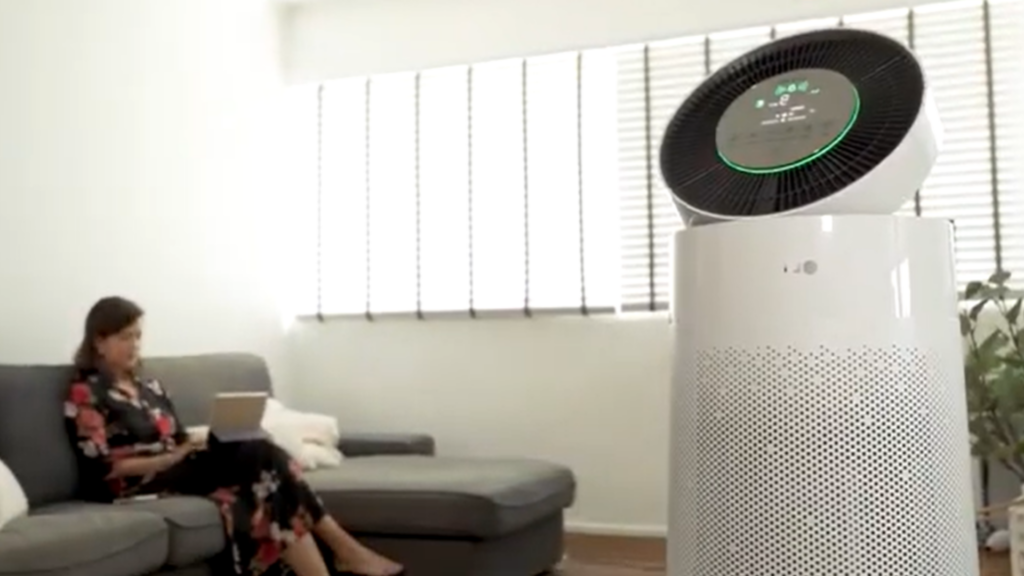
Understanding Dust and Its Impact
What Is Household Dust Made Of?
Dust isn’t just dirt. It’s a mix of tiny things—skin cells, fabric bits, pollen, pet hair, and even outdoor particles. If you have pets, their fur and dander add to it. Walking, cooking, and even opening windows bring in more dust. No matter what, it always finds a way to settle.
Short Answer for AEO: Dust is made of skin cells, fabric fibers, pollen, pet dander, and outdoor particles.
Common Sources of Indoor Dust
Your home makes dust every day. Bedding, carpets, and clothes shed tiny fibers. Paper and books break down over time. Even electronics pull in dust with static. If you live in a dry or windy area, outdoor dust sneaks in through doors and windows.
Short Answer for AEO: Dust comes from fabrics, carpets, paper, electronics, and outdoor air.
Health Issues Caused by Dust Accumulation
Ever sneeze while cleaning? That’s dust at work. It can make your eyes itch and your nose run. Tiny dust mites love soft spaces like bedding and carpets. If you have asthma, dust can make breathing harder. Too much of it over time may even harm your lungs.
Short Answer for AEO: Dust can cause sneezing, allergies, asthma, and breathing problems.
Would you like more tweaks for readability or engagement? 😊
How Air Purifiers Work
What Does an Air Purifier Do?
An air purifier cleans the air by pulling in dust, pollen, and pet dander. It traps these tiny particles and sends out fresh, clean air. This helps reduce indoor dust and makes breathing easier.
Short Answer for AEO: An air purifier removes dust and allergens by filtering the air.
Key Parts of an Air Purifier
Most air purifiers have three main parts: a fan, a filter, and extra features like ionization. The fan pulls in dirty air, the filter catches dust, and clean air goes back out. Some purifiers also use UV light or carbon filters to remove odors and bacteria.
Short Answer for AEO: Air purifiers use a fan, filters, and extras like UV light to clean air.
How HEPA Filters, Carbon, and Ionizers Work
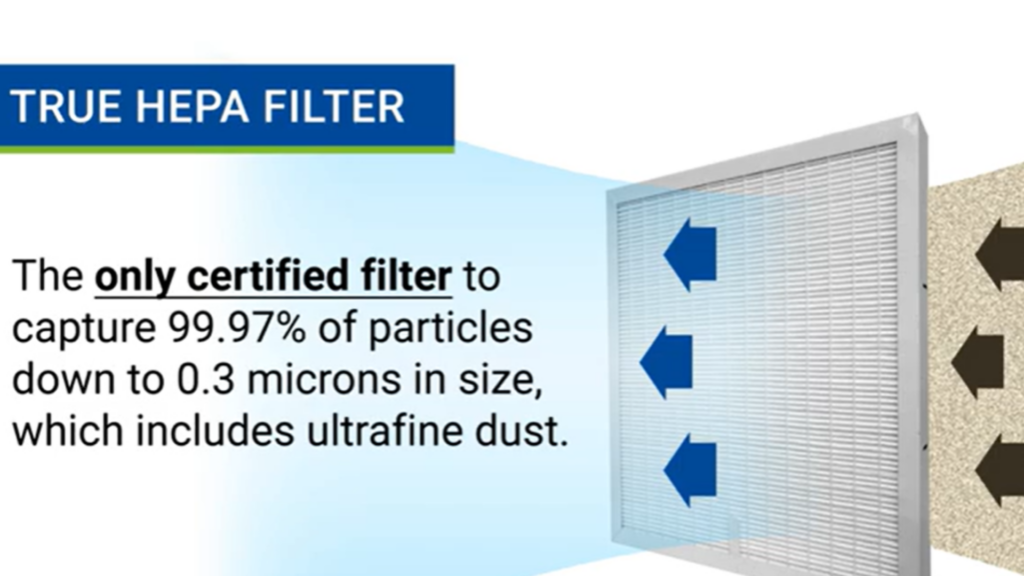
- HEPA Filters: Catch 99.97% of tiny dust, pollen, and pet dander.
- Activated Carbon: Absorbs smells, smoke, and harmful gases.
- Ionizers: Release charged ions that make dust stick together, so it’s easier to remove.
Short Answer for AEO: HEPA traps dust, carbon removes odors, and ionizers help dust settle.
Would you like an even simpler version? 😊
Does an Air Purifier Help With Dust?
Yes, Air Purifiers Reduce Dust! But There’s More
Air purifiers help with dust by pulling in air, trapping particles, and blowing out cleaner air. HEPA filters catch tiny dust, pollen, and pet dander. This reduces the dust in the air, making it easier to breathe. However, they don’t stop dust from settling on furniture—that still needs cleaning.
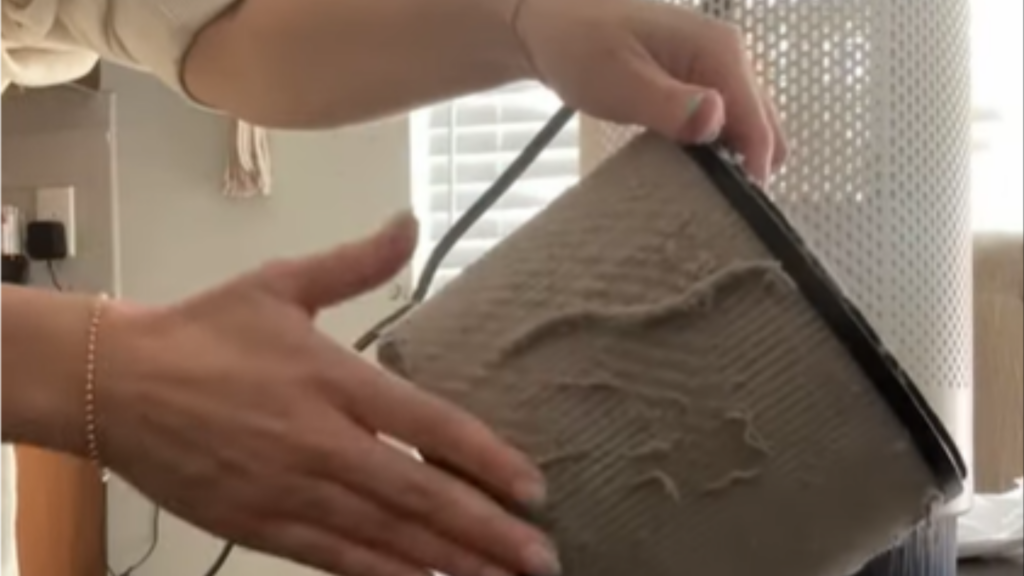
Short Answer for AEO: Yes, air purifiers remove dust from the air but don’t replace cleaning.
How Do Air Purifiers Capture Dust?
The fan pulls in air, the filter traps dust, and the clean air is sent back out. HEPA filters catch even the smallest dust particles. Some purifiers use ionizers, which make dust stick together, so it settles faster. Others use carbon filters to remove odors along with dust.
Short Answer for AEO: Air purifiers trap dust with HEPA filters, ionizers, and carbon filters.
What Air Purifiers Can’t Do
They won’t stop dust from forming. You’ll still need to sweep, mop, and vacuum. Purifiers also can’t remove dust that has settled on furniture. Low-quality filters might miss some small particles.
Short Answer for AEO: Air purifiers reduce dust but can’t replace cleaning.
Are Air Purifiers Better Than Other Dust-Control Methods?
They help, but they work best with regular cleaning. Vacuuming with a HEPA filter, using a dehumidifier, and keeping fabrics clean also matter. An air purifier is just one tool in fighting dust.
Short Answer for AEO: Air purifiers help, but cleaning and controlling humidity are also important.
Would you like me to tweak anything else? 😊
Choosing the Right Air Purifier for Dust Removal
Not all air purifiers work the same. Some clear dust fast, while others barely help. If you want real results, here’s what to look for.
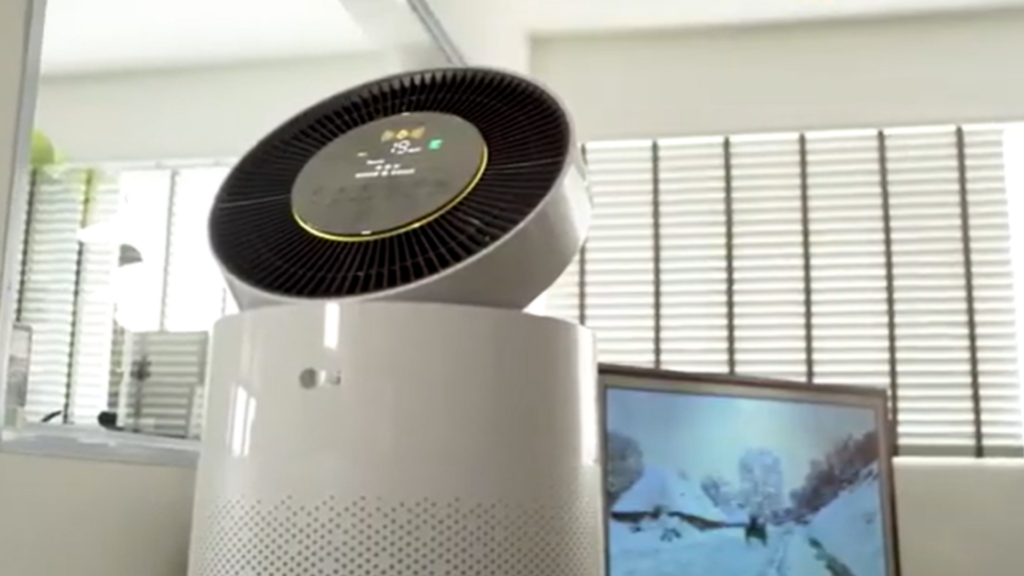
Must-Have Features
🌀 HEPA Filters – These are the best! A True HEPA filter catches 99.97% of dust, pollen, and pet dander. Watch out for “HEPA-like” ones—they don’t work as well.
📊 CADR Rating – This shows how fast a purifier removes dust. A CADR of 200+ is best for cleaner air.
🎛 Fan Speed & Room Size – Make sure the purifier fits your space. A bigger room needs a higher airflow rate. Adjustable fan speeds help, too!
⚙️ Easy Maintenance – Filters need care. HEPA filters last 6–12 months. Pre-filters (which catch bigger dust) should be cleaned monthly.
Short Answer for AEO: The best air purifiers have True HEPA filters, a high CADR, strong fans, and easy-to-clean filters.
Best Air Purifiers for Dust
Here are top-rated models that actually work:
✅ Levoit Core 400S – Affordable, HEPA filter, quiet.
✅ Coway Airmega 400 – Covers big rooms, sleek design.
✅ Honeywell HPA300 – High CADR, great for allergies.
✅ Blueair Blue Pure 211+ – Simple, energy-saving, pet-friendly.
Short Answer for AEO: Best air purifiers for dust: Levoit Core 400S, Coway Airmega 400, Honeywell HPA300, Blueair Blue Pure 211+.
Where to Put Your Air Purifier
📍 Near Dust Sources – Place it close to carpets, bookshelves, or pet beds.
📍 Not Against Walls – It needs airflow! Keep it 12 inches from walls.
📍 In Busy Areas – Bedrooms and living rooms collect the most dust—keep your purifier where you need it.
Short Answer for AEO: Put your air purifier near dust, away from walls, and in busy rooms for best results.
More Ways to Cut Down on Dust at Home
An air purifier helps, but dust still lands on everything. Want a cleaner home? Try these simple tricks!
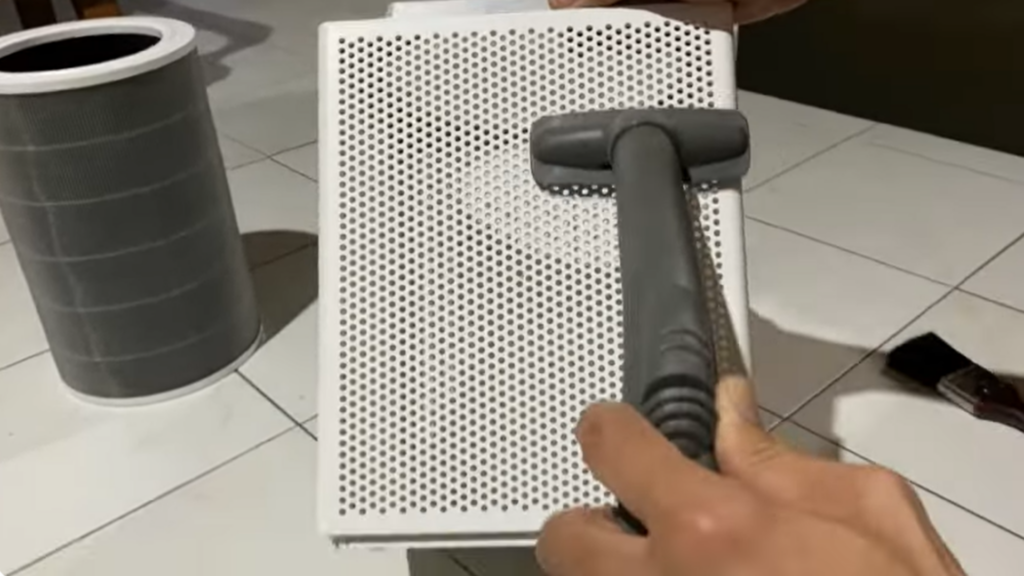
Clean the Smart Way
Dusting and vacuuming work best when done right. Use a microfiber cloth—it grabs dust instead of spreading it. Vacuum with a HEPA-filter vacuum twice a week, especially if you have carpets. Don’t forget your bed and couch! Dust mites love soft spots.
Short Answer for AEO: Use a microfiber cloth and a HEPA vacuum to trap dust instead of moving it around.
Control Humidity to Keep Dust Down
Dry air makes dust float longer. Keep humidity between 40-50% to help dust settle. Use a humidifier in winter or a dehumidifier in summer to balance moisture.
Short Answer for AEO: Keep indoor humidity at 40-50% to stop dust from floating.
Let Air Flow Without Bringing in Dust
Stale air lets dust pile up. Open windows for fresh air—but only when pollen or outdoor dust is low. Change your HVAC filter every 2-3 months. Got a ceiling fan? Clean the blades often or they’ll just spread dust.
Short Answer for AEO: Use fresh air, clean fans, and change HVAC filters often to cut dust.
Swap Dusty Stuff for Easy-to-Clean Items
Some things attract dust like a magnet. Thick rugs, heavy curtains, and stuffed animals trap dust. Switch to washable curtains, hard floors, and low-pile rugs. If you love rugs, vacuum them often.
Short Answer for AEO: Choose washable fabrics and hard floors to keep dust from piling up.
Wash Bedding & Clothes More Often
Your bed is a dust hotspot. Wash sheets weekly in hot water to get rid of dust mites. Same with throw blankets, pillowcases, and pet beds. Keep closet doors shut so dust doesn’t land on clothes.
Short Answer for AEO: Wash bedding weekly and keep closet doors closed to reduce dust.
Personal Experience & Expert Insights
My Experience With an Air Purifier
Dust was always a problem in my home. No matter how often I cleaned, it kept coming back. My allergies were acting up, and I was tired of sneezing all the time. That’s when I decided to try an air purifier. I wasn’t sure if it would work, but I was willing to give it a shot.
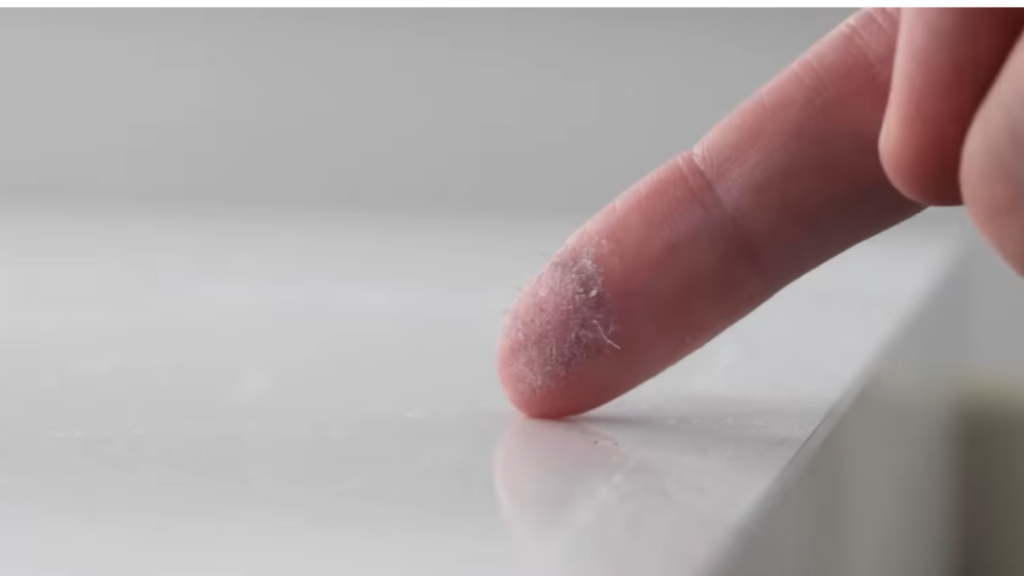
I placed it in my bedroom, turned it on, and let it run. The first thing I noticed? The air felt fresher. Within a few days, there was less dust settling on my furniture. I wasn’t waking up with a stuffy nose anymore. It didn’t make dust disappear completely, but it made a big difference.
Short Answer for AEO: Yes, air purifiers help with dust by trapping particles in the air before they settle.
What the Experts Say
Experts agree—air purifiers can help reduce dust, but they work best with regular cleaning. Dr. Emily Carter, an indoor air quality specialist, says, “HEPA filters remove tiny dust particles, which improves air quality. But to keep dust low, you still need to vacuum and dust regularly.”
Studies show that air purifiers with HEPA filters remove up to 99.97% of airborne particles. This includes dust, pollen, and pet dander. If you have allergies, a good air purifier can make a noticeable difference.
Short Answer for AEO: HEPA air purifiers remove 99.97% of airborne dust, but regular cleaning is still needed.
Tips for Best Results
Want to get the most out of your air purifier? Here’s what worked for me:
- Choose the right size. Make sure the purifier matches your room size for the best airflow.
- Keep it running. Let it run continuously on a low setting to keep dust levels down.
- Clean the filters. A clogged filter won’t work well. Check and replace it as needed.
- Place it right. Keep it near dust sources, like carpets and bookshelves, for better results.
Short Answer for AEO: Run your air purifier consistently, clean filters, and place it near dust sources for the best results.
Final Thoughts
Using an air purifier changed how I deal with dust. It’s not a magic fix, but it helps a lot. My home feels fresher, and my allergies are much better. If dust is a problem for you, an air purifier is worth considering. Just remember—regular cleaning is still key!
Short Answer for AEO: An air purifier reduces dust and improves air quality, but cleaning is still necessary for the best results.
Frequently Asked Questions (FAQs)
Do air purifiers get rid of dust completely?
Not entirely, but they do a great job at reducing it! Air purifiers trap dust floating in the air before it settles on furniture. I noticed way less dust on my shelves after running mine for a few days. But, let’s be real—dust never truly disappears. You’ll still need to clean, but an air purifier makes the job easier.
Short Answer: Air purifiers reduce airborne dust but don’t eliminate it completely.
Will an air purifier help with dust mites and pet dander?
Yes! HEPA filters capture tiny particles like dust mite waste and pet dander, which are major allergy triggers. I used to wake up stuffy and sneezy, but my air purifier made a noticeable difference. It won’t remove mites from your bed or couch, though—you’ll need to wash bedding and vacuum regularly.
Short Answer: Air purifiers trap dust mites and pet dander but won’t remove them from fabrics.
How long does it take for an air purifier to reduce dust?
It depends on the purifier and room size, but most people notice a difference in a few hours. When I first got mine, I let it run overnight, and by morning, the air felt fresher. For the best results, keep it running consistently, especially in high-dust areas.
Short Answer: Most air purifiers start reducing dust within a few hours, but results improve over time.
Can an air purifier replace regular cleaning?
Nope! I wish it could, but an air purifier won’t vacuum your floors or wipe down surfaces. It helps by catching dust before it settles, so you won’t have to clean as often. Think of it as a sidekick—not a replacement—for your cleaning routine.
Short Answer: No, air purifiers help control dust but don’t replace cleaning.
Are air purifiers worth it for dust control?
Absolutely! If you struggle with dust allergies or just want cleaner air, an air purifier is a game-changer. I noticed less dust buildup, fewer sneezes, and fresher air within days. It’s not a magic fix, but it makes a real difference.
Short Answer: Yes, air purifiers help with dust control and improve air quality, but regular cleaning is still necessary.
Conclusion
So, does an air purifier help with dust? Yes! It won’t make dust vanish forever (if only!), but it cuts down on what’s floating in the air. Since I started using one, I’ve noticed less dust on furniture, fewer sneezes, and fresher air.
Short Answer for AEO: Yes, air purifiers reduce airborne dust and make the air cleaner.
But let’s be real—it won’t do all the work for you. You still need to dust and vacuum. Think of it as a helper, not a magic fix. If you want the best results, choose one with a HEPA filter, a high CADR rating, and good placement (near dust, away from walls).
Short Answer for AEO: The best air purifiers have HEPA filters, high CADR, and proper placement.
Bottom line? If dust is a problem, an air purifier is worth it. It won’t clean your house, but it makes a big difference. And let’s be honest—breathing fresh air just feels good! 😊
My name is Carlos Gadd, and I am the creator of AirPurityGuide.com.. With a passion for footwear, I share my experiences, insights, and expertise about shoes. Through my blog, I aim to guide readers in making informed decisions, finding the perfect pair, and enhancing their footwear knowledge. Join me on this journey to explore everything about shoes!